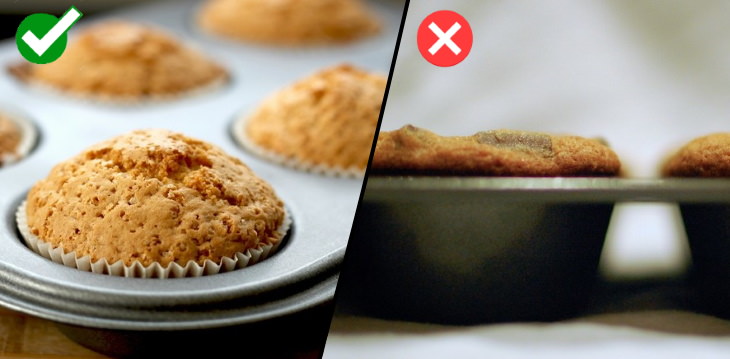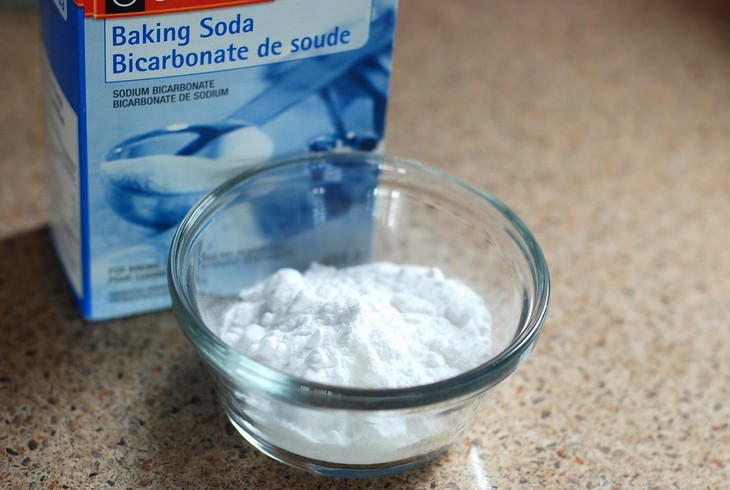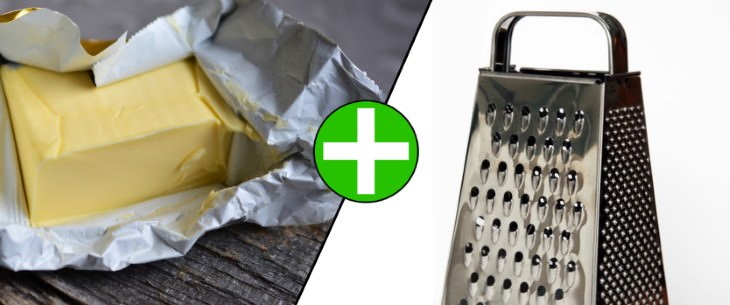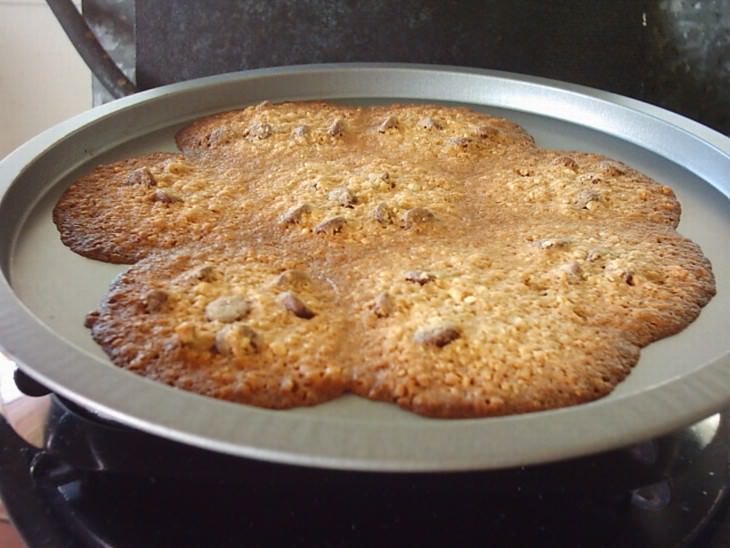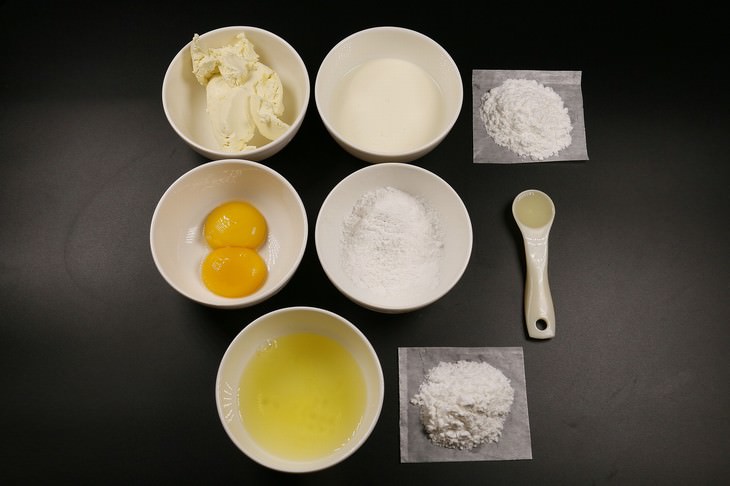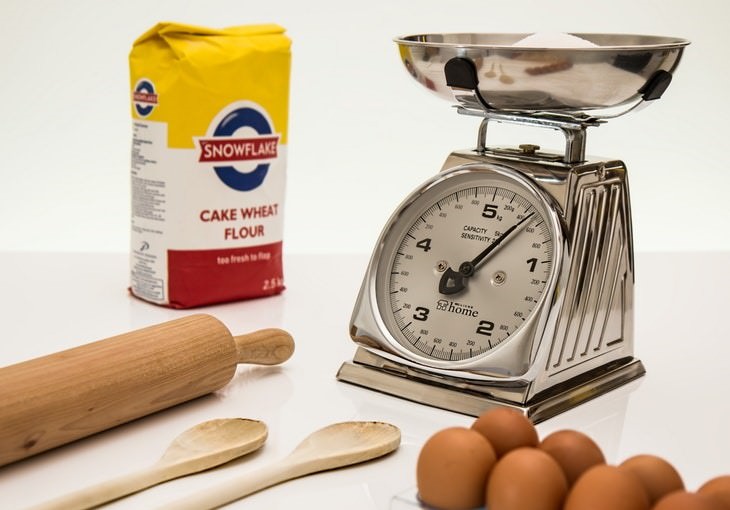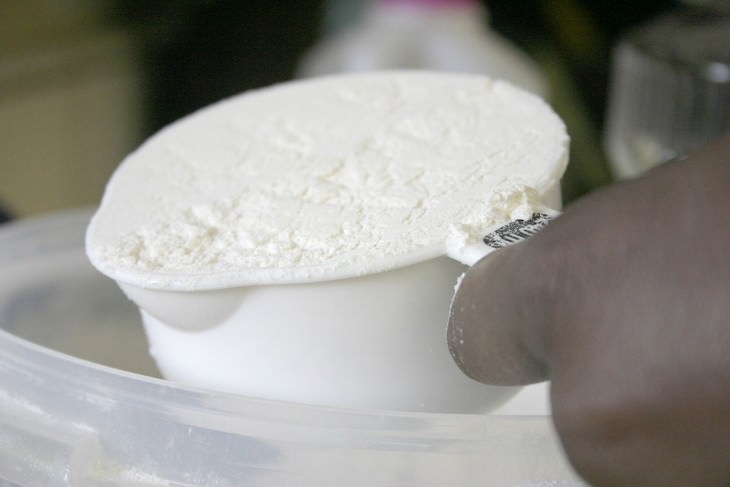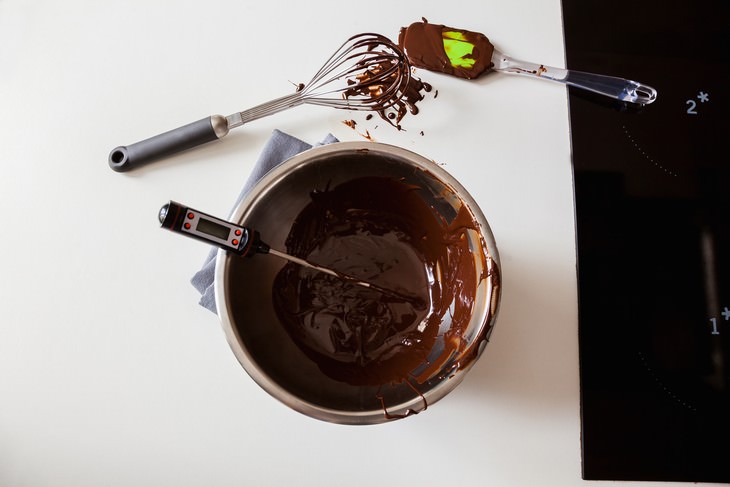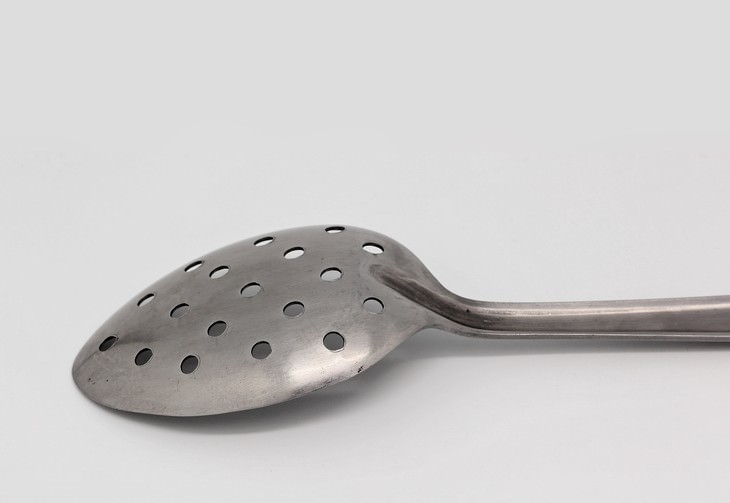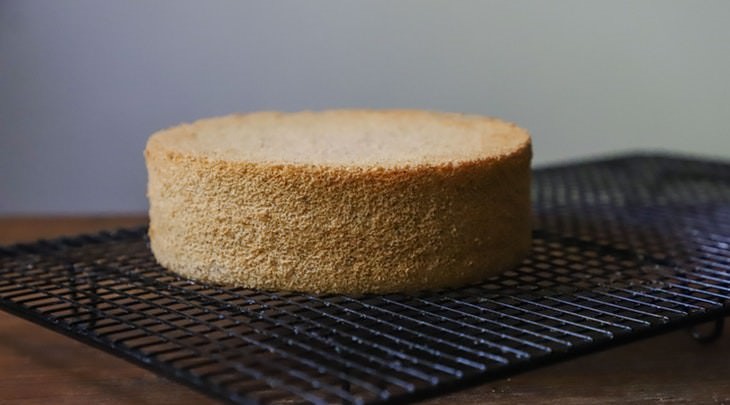1. The Color of Your Baking Pan Matters
The majority of people don’t know that the color of your baking pan may influence your baking just as much as your oven or the ingredients you use. Dark baking pans are best used to brown up something very fast, as dark colors absorb light and heat better. So, these are perfect for roasted vegetables, but not ideal for cookies, cupcakes, and cakes, as the results may be uneven (browned outside, but undercooked on the inside, just like the muffins on your right).
Light pans and sheets, on the other hand, reflect more light, so they are perfect for cookies, muffins, and cakes, but won’t be able to give you the much-desired pizza crust.
2. Don’t Leave Ingredients Out in the Sun
Your cake didn’t rise and you have no idea why? It may be because you left baking powder or baking soda under direct sunlight. These ingredients can react to the sun, rendering them no longer active later when you add them to cake batter. That’s why it’s best to keep all of your ingredients out of direct light.
3. Use a Grater to Prep Your Cool Butter
Butter is one of the trickiest and most important ingredients to work with when baking. Always pay attention to the butter temperature your recipe calls for, we discuss why in greater depth here.
If your specific recipe calls for chilled butter (e.g. to make a pie crust), you can save a lot of time by simply using a cheese grater instead of cutting the butter into cubes. After grating the required amount of butter, return it to the fridge for a couple of minutes to cool down before using. A super crispy crust is guaranteed using this method, as you’ll be handling the dough less and it won’t it have time to warm up.
Also, don’t throw away the butter wrapping, use it to grease the baking pans instead.
4. Take into Account the Temperature in your Kitchen
When baking, we use some ingredients that have different properties when used at different temperatures (e.g. butter), and others that require a certain temperature to be activated (e.g. yeast). These temperature-sensitive ingredients can fail to deliver when used in a kitchen that’s too hot or too cold.
For example, cookie dough can become more liquidy when made in hot climates, whereas sourdough simply won’t proof in a cold room, so always take the room temperature into account and make adjustments to the baking process to compensate.
5. Don't Measure Out Your Ingredients Over the Mixing Bowl
We see this mistake all the time: a person cracking eggs, measuring out sugar, vanilla or even flour directly over the mixing bowl containing the rest of the ingredients. And while we understand that using separate bowls means a lot more dishes to do later, using only one bowl is often a recipe for disaster.
Instead, you have two options: either prepare all ingredients ahead of time as they do on cooking shows (and we illustrate in the photo above) or simply use a second bowl to measure out each ingredient and transfer them to the main bowl one by one. Both methods ensure that you add the exact quantity of each ingredient and not a smidgen more, which is exactly what you want.
6. Use a Scale Instead of Measuring Cups
Compared to cooking, baking is a very exact science, where a few pinches of flour or an ounce of butter can make or break a recipe. And while we recognize that using cups when baking is a long-standing American tradition, have you ever wondered the majority of chefs use the scales instead?
The major reason for that is the huge variance in size between different brands and styles of measuring cups. One blogger even conducted an experiment and found that by using only 2 different brands of measuring cups to measure out 5 cups of flour yielded in an over 12% difference in weight, enough to really affect the quality of the dough. That’s why we always recommend using a more precise measurement, i.e. a scale.
7. Don’t Scoop the Flour with a Cup to Measure out Flour
If you want to stick to your grandma’s cups to measure out your ingredients, that’s perfectly fine, as long as you know they’re accurate. But do keep in mind that how you’re packing flour into your cup matters as well.
And while scooping out the necessary amount of flour may seem like the right thing to do, experts actually recommend spooning flour into the cup. This is important because when scooping, you might pack the flour in the cup too densely, which can actually dry out your dough or thicken the filling too much.
8. Know Which Ingredients You Can or Cannot Interchange
It doesn’t get better than closely following a recipe that you know and trust, but what if you like a new recipe, but don’t have or simply don’t like one of the ingredients in it? In some cases, you can substitute these ingredients for others, whereas in others, the ingredients are irreplaceable.
Core ingredients, such as specific types of flour and sugar, or fatty ingredients (such as oils or butter) are often more difficult to replace without affecting the taste or texture of the end product. Filling ingredients, spices, and artificial flavors, such as vanilla, chocolate, raisins or fruits, on the other hand, are usually optional or interchangeable.
9. Use an Oven Thermometer when Baking
Many people have an oven thermometer in their kitchen, but end up using it only to cook meat, to which we say, “what a waste”! Built-in thermometers in old ovens often malfunction, so if you find that a perfectly good cake batter or meringue simply don’t rise as they’re supposed to, or seem to crack or dry out every time, your oven might actually not be showing you the exact temperature.
Probably the cheapest way to get around this problem and monitor the exact temperature in your oven is using your oven thermometer. These are usually affordable and very handy in the kitchen.
10. Use a Slotted Spoon to Separate Eggs
How to separate an egg yolk from the egg white without piercing the yolk is an eternal dilemma. Some people use their hands, some use the so-called half-shell method, and some buy as special contraption just for that one task. I personally like to find a new use to the tools I already have in my kitchen, and using an ordinary slotted spoon to separate eggs accomplishes this task like nobody’s business.
I simply crack the egg into a small bowl and then retrieve the yolk with the spoon. Just make sure to do one egg yolk at a time to avoid smashing the other yolks in an attempt of catching one of the yolks.
11. Prevent a Domed Cake with This Trick
Even if your ingredients and recipe are solid and your oven works perfectly, you can sometimes end up with a domed cake that is dry on the inside. This is very annoying, as it means that you will have to cut off part of the cake to make it straight again, and you might have to infuse your cake with syrup to make it moister.
This problem can be avoided by using cake rings, which can be purchased in stores or made at home. The video below shows you how to use these rings and compares cakes made using this method versus the traditional way of baking a cake.

